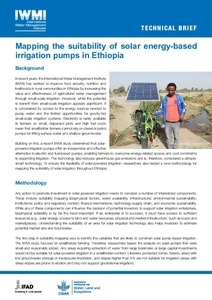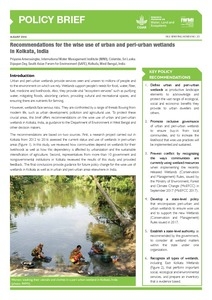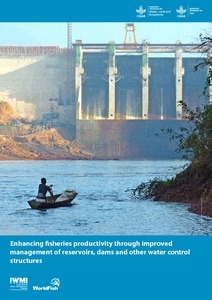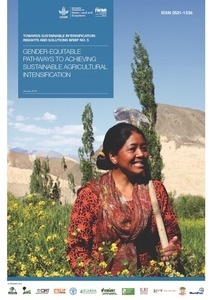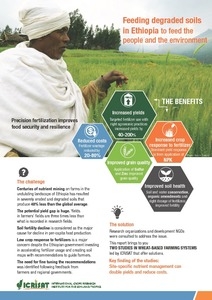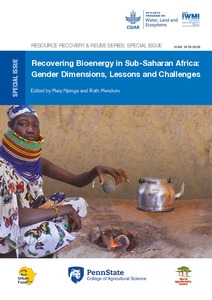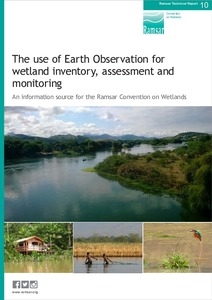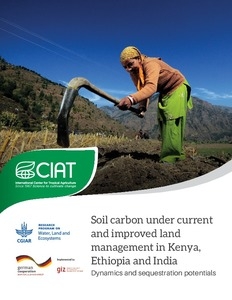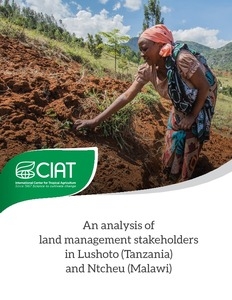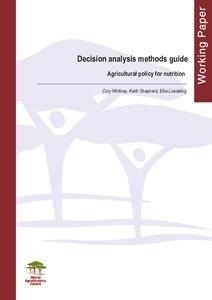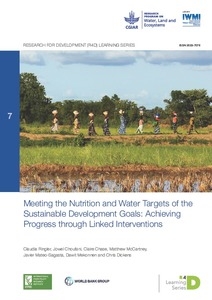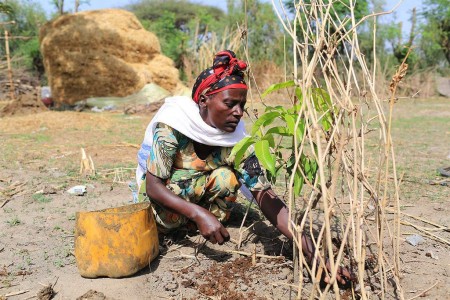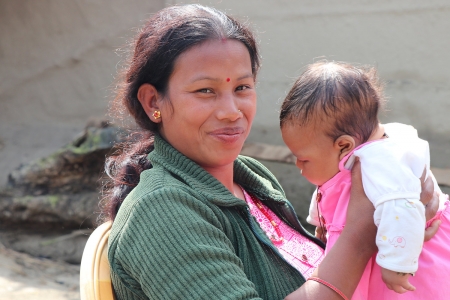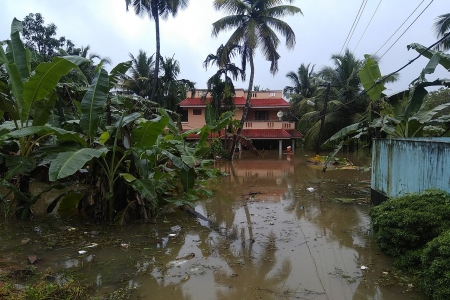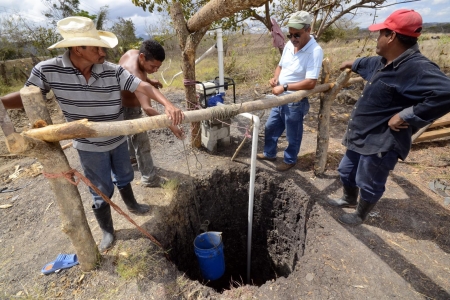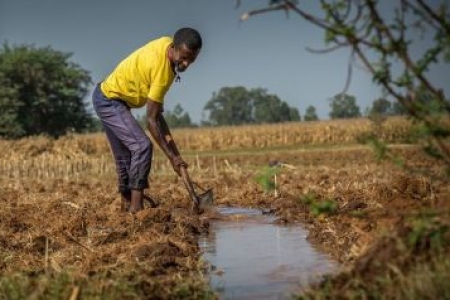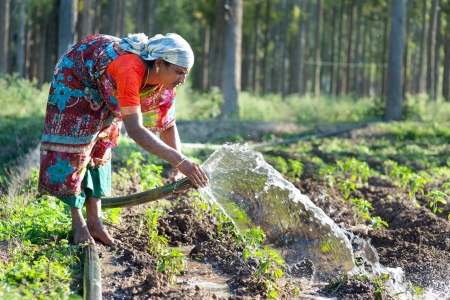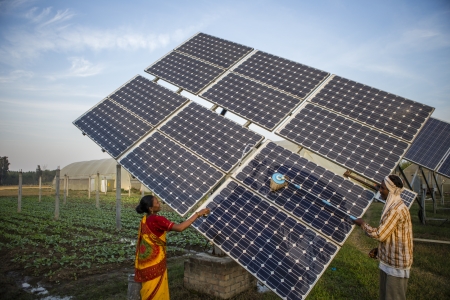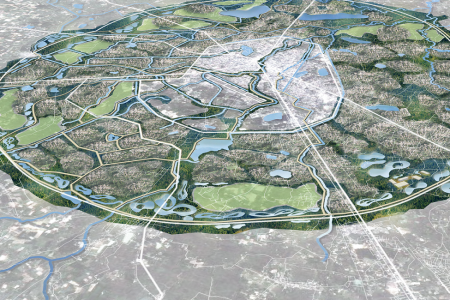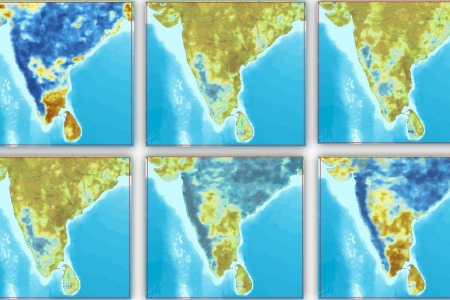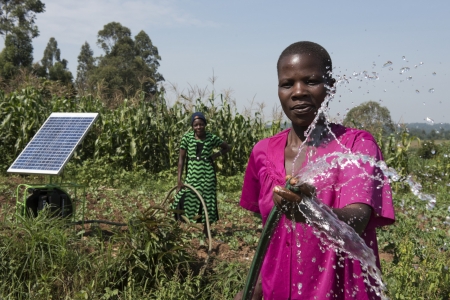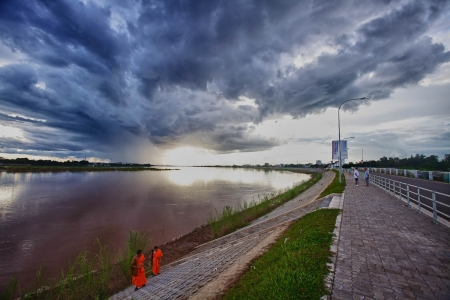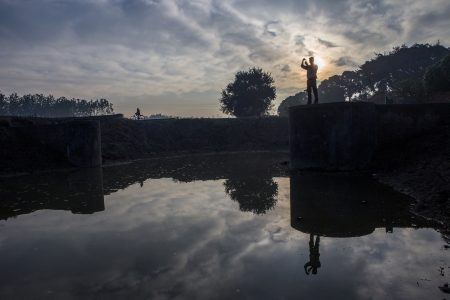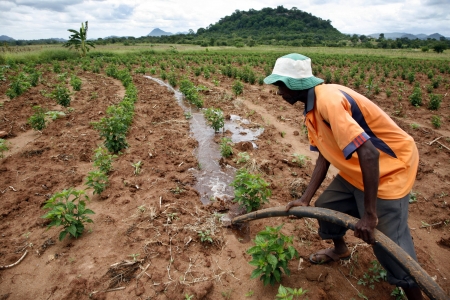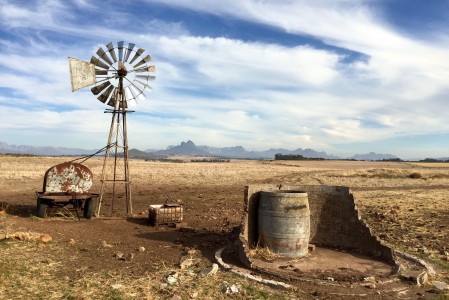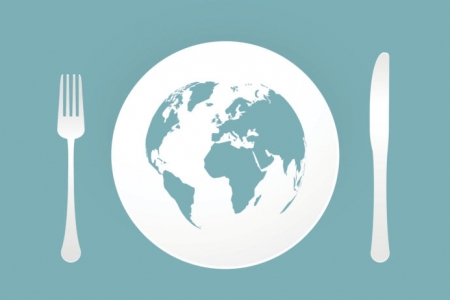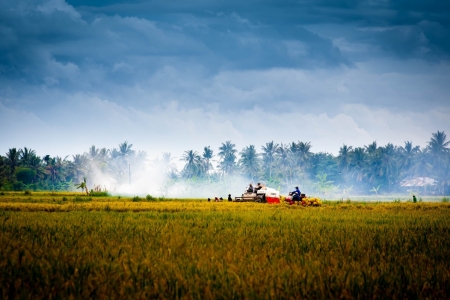The WLE 2018 Annual Report > Planetary boundaries

New financial incentive may drive Amazonian smallholders to restore forest and mitigate climate change
The Amazon rainforest provides an important environmental service by absorbing carbon dioxide from the atmosphere. Therefore, when the forest is under pressure, the impacts are severe: Globally, deforestation accounts for nearly 20% of all greenhouse gas emissions — more than the world’s entire transport sector.
To help smallholders in the Amazon implement forest conservation practices and mitigate climate change, the Financing Fund for the Agriculture Sector (FINAGRO) is testing a methodology developed with support from the CGIAR Research Program on Water, Land and Ecosystems (WLE).
Peru and Colombia – accounting for 23% of the Amazon rainforest – are aware of their importance as providers of ecosystem services at the local, regional and global level. They support efforts to design viable land use and management alternatives that can reduce pressure on the Amazon rainforest.
The objective of the Sustainable Amazonian Landscape (SAL) project, led by the International Center for Tropical Agriculture (CIAT) with WLE support, was to support the development of science-based practices to enable farmers to improve their well-being, while enhancing their capacity to mitigate and adapt to climate change. Sustainable land use alternatives were co-designed and pilot-tested jointly with a network of 42 farmers on 262 hectares in Colombia and Peru.
The farms in Colombia then participated in a pilot led by FINAGRO to simulate the application and viability of a new agri-environmental financial incentive, as part of the Vision Amazonia program, led by the Ministry of Environment of Colombia.
This financial incentive (called Instrument for Sustainable Productive Transformation) is designed for small- and medium-size landholders to promote the conservation of the remaining forests and restoration of deforested areas, while concentrating cattle ranching activities in less fragile, but more productive areas. Under this scheme, farmers receive a soft loan that includes benefits such as low interest rates (56% less than ordinary credit), guarantees and conditions of access, and flexibility of payment, including an incentive for releasing pasture areas for restoration, for up to 25% of the value of the credit.
After the simulation exercise with farmers, FINAGRO selected a first cohort of potential beneficiaries. Currently, 14 farmers from the SAL project and another 40 farmers that did not participate in the SAL project have been selected for receiving the soft loan.
One of the bottlenecks in the adoption of new and more sustainable practices is access to technical assistance. Therefore, the protocols developed by the SAL project for implementing the new practices were shared with FINAGRO to help them design technical assistance protocols for new farmers, who will benefit from this incentive.
It has been estimated that this FINAGRO-led financial incentive scheme could, by 2019-2022, benefit 4,413 farmers with an investment of USD 12.9 million, USD 13.1 million in the second period (2023-2026) and USD 13.5 million for the last period (2027-2030). The funds could be provided by public and private banks, international cooperation for the conservation of the environment, private investment funds, the Ministry of Agriculture and Rural Development, and regional and local governments. At the national level, the 12,043 farmers across 546,235 hectares could potentially benefit in the future.
Agricultural challengesare meetingtheir matchWLE 2018-19 Research Highlights
Finding the right solutions puts sustainable agriculture within reach
Sustainable agriculture faces a constellation of ever-shifting challenges. Our world’s population grows toward ten billion, but there is now indisputable evidence of multiple serious social and environmental impacts caused by current agricultural and food systems. We are fast approaching our limits.
Play the Sustainable Agriculture Match GameClick two cards. If the pictures match, the WLE solution will pop up! If not, try again with two more cards
Planetary boundaries
Food systems are a major driver of the unsustainable use of the planet’s increasingly fragile ecosystems. Water, land, forests and the biodiversity are precious, yet finite, natural resources. Current trends show that we are pushing the limits of what Earth can handle. How can we transform agriculture so that it's no longer part of this problem, but part of the solution?
Ann Tutwiler (CGIAR Research Program on Water, Land and Ecosystems (WLE))Board Chair
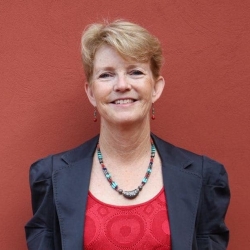
WLE is establishing a commission to convene global experts on sustainable intensification of agriculture. These experts will bring together years of research by WLE, our CGIAR partners and other science institutions to synthesize the best policies, economic incentives, tools, technologies and practices as well as lay out a roadmap for a sustainable and equitable food future.
Step Aston (One Acre Fund)Director - Agriculture Research
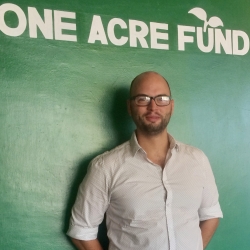
Access to reliable, large-scale, low-cost soil data is an important part of our efforts to develop more locally tailored soil fertility management recommendations and monitor the long-term impacts of our programs on soil health. To date, our soil lab has processed 50,000 soil samples, deriving insights to inform program strategy and decision-making in six countries. This effort would have been cost-prohibitive were it not for the technological breakthroughs and support delivered by the soil-plant diagnostic laboratory.
Food availability
Population growth, demographic shifts, dietary change, climate change and environmental decline challenge everything we know about how to grow and share food. Yet, food production must increase – some estimates say by 50 percent globally, and by almost 100 percent in Africa and Southeast Asia by 2050. But it’s not only about increased production. Better, healthier and more nutritious food is needed too.
Diego Senoner (Indo-German Energy Program)Technical expert

A well-designed KUSUM (Indian solar pump and grid-connected power plant scheme) policy for solar-powered irrigation is important for India to secure sustainable development of agriculture, maintain food security and safeguard groundwater during times of changing climatic conditions.
Marcela Quintero (International Center for Tropical Agriculture (CIAT))Agroecosystems and sustainable landscapes research area director
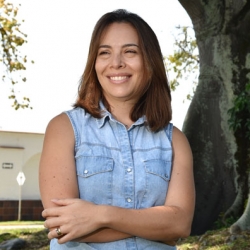
This data platform for improving water management demonstrates the potential that alliances between research centers and development agencies have to generate products that provide concrete solutions to real problems in agriculture. Likewise, these partnerships allow technical and scientific products to reach end users faster.
Equality of opportunity
In this era of planetary degradation, the world’s poorest and most marginalized often bear the brunt of the burden, losing livelihoods and opportunities. This can drive conflict and migration. With men increasingly leaving rural areas, women are playing a greater role in agriculture, but are still often marginalized and lack access to decision making and resources. At the same time, the sector offers fewer viable jobs to youth. Solutions are only sustainable if they are also equitable.
Abdullaeva Uguloi (Water user association of Obchakoron District, Halivad Jamoat, Tatjikistan)Head of WUA
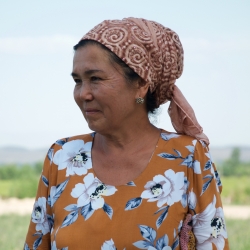
All water user associations should be headed by women. There is so much work, especially at the beginning, but you have to balance so many tasks, and you cannot give up. Women are more likely to overcome barriers. You have to be happy to always be working. Women are much better at this than men.
Miriam Otoo (International Water Management Institute (IWMI))Research group leader for resource recovery and reuse
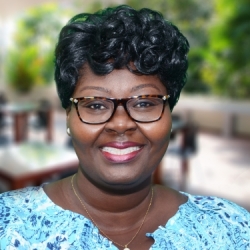
The business of safe recovery of water, nutrients and energy from domestic and agro-industrial waste offers significant opportunities to generate economic and social benefits to women and unemployed youth, especially in developing countries. These entrepreneurs, however, face high market entry barriers due to a lack of social networks, specialist skills and capital. It is therefore important to identify appropriate business training for youth or women entrepreneurs, tailored to their specific needs and capacity gaps under each unique geographical context.
2018 Publications highlights
WLE in the news
Thrive Blog Highlights
WLE is grateful for the support of CGIAR Trust Fund Contributors, including direct support from
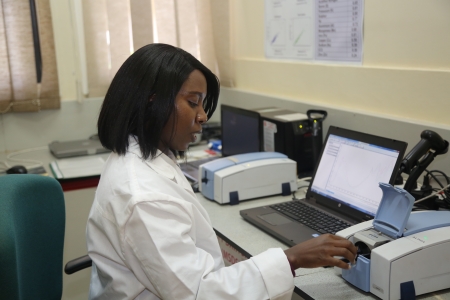
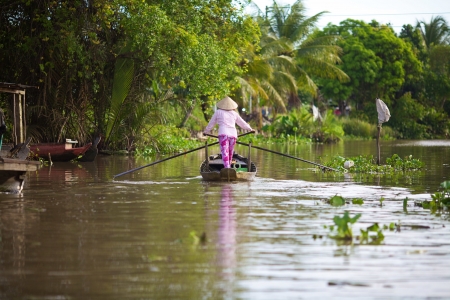
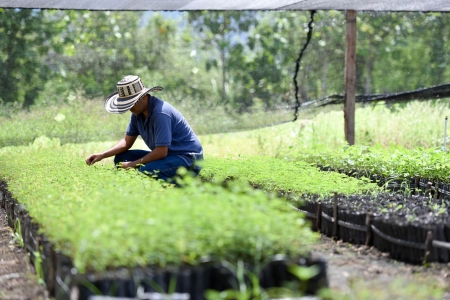
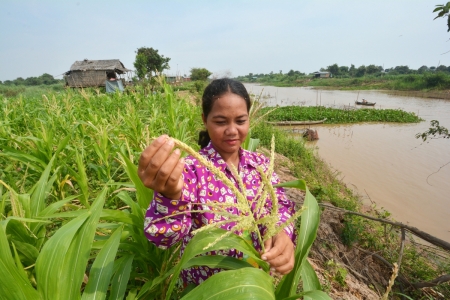
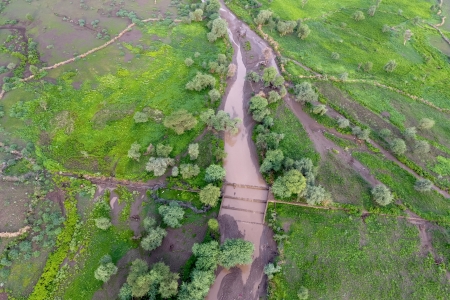
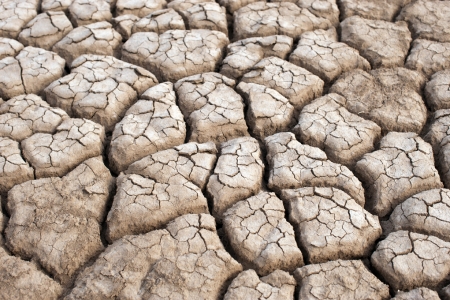
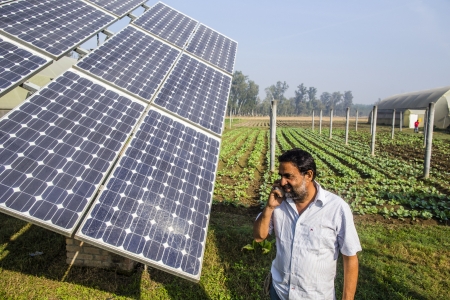
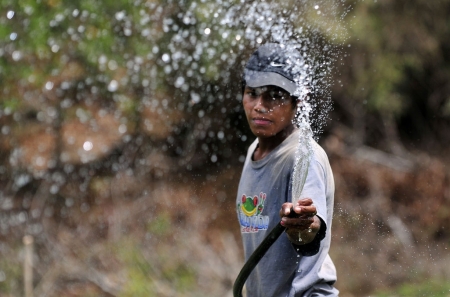
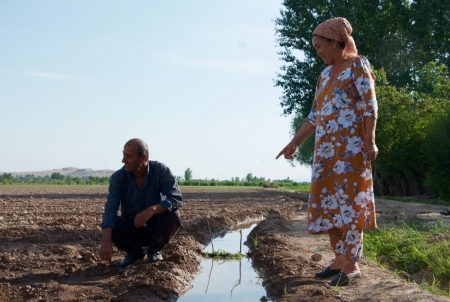
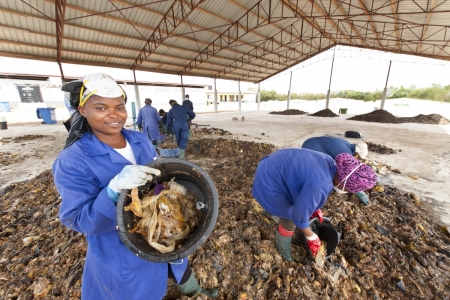
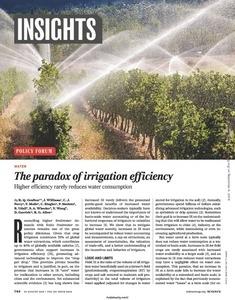
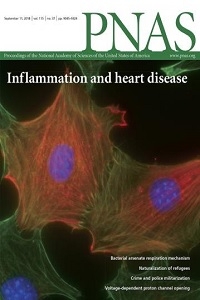
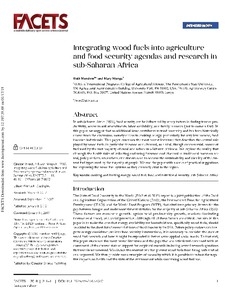
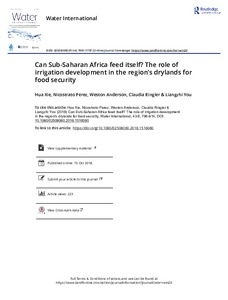
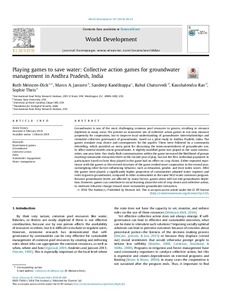
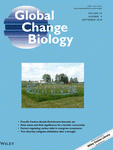

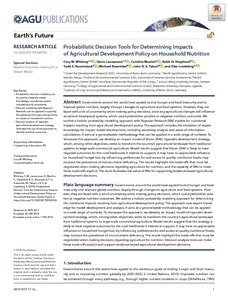
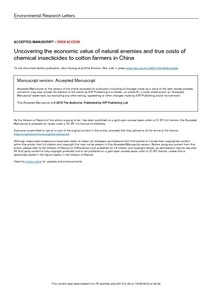
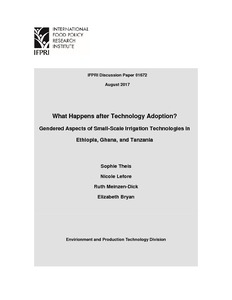
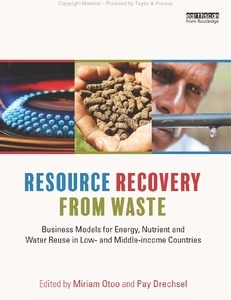
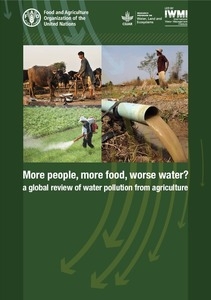
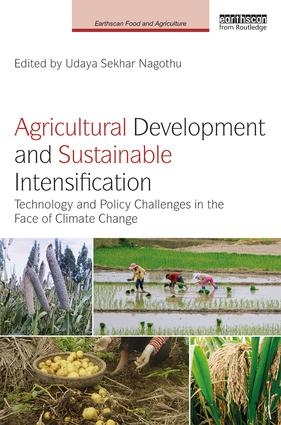
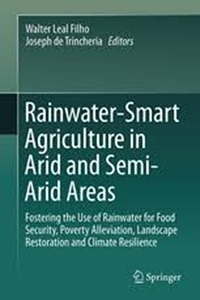
.pdf_/index.jpg?itok=1PqCyZYF)
